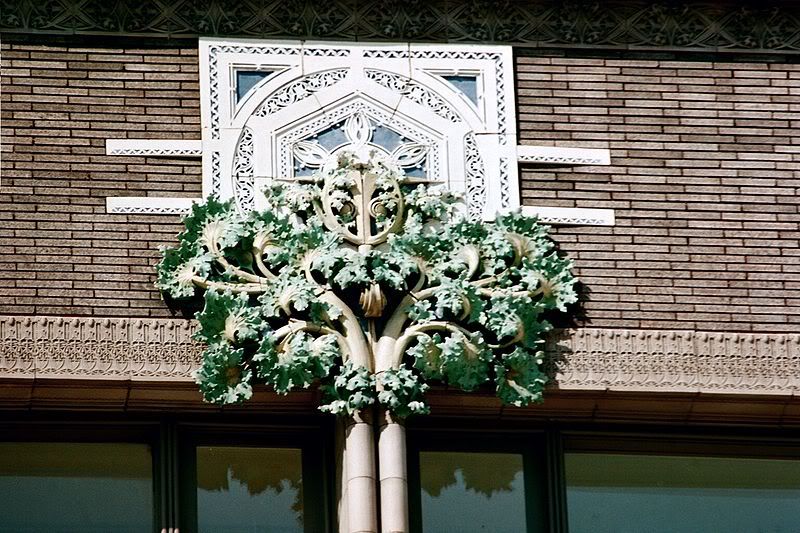 hitects, the Prairie School. Geometric shapes and intertwining vines became a signature for Sullivan in his designs, as he believed that the ornamentation of a structure should reflect nature as well as the interior purpose of the building. An original piece of Sullivan's work has become rare to find because after his death his works were considered blasphemous during urban renewal and destroyed only to be replaced by more contemporary structures. Many smaller pieces of Sullivan's were saved by Richard Nickel, who would hold one man protests and sneak into some demolition sites to steal architectural pieces before or during destruction of an area.
hitects, the Prairie School. Geometric shapes and intertwining vines became a signature for Sullivan in his designs, as he believed that the ornamentation of a structure should reflect nature as well as the interior purpose of the building. An original piece of Sullivan's work has become rare to find because after his death his works were considered blasphemous during urban renewal and destroyed only to be replaced by more contemporary structures. Many smaller pieces of Sullivan's were saved by Richard Nickel, who would hold one man protests and sneak into some demolition sites to steal architectural pieces before or during destruction of an area.Stairway Balusters were designed to adorn the Schlesinger & Mayer Department Store, now Carson's in Chicago, but was later removed and privately sold in during the department stores remodeling in the 1970s. Sullivan designed the architecture for the department store with the symbolic and functional needs of the consumer, utilizing mostly cast iron to build the structure of the store. The balusters literally reflect the interior material of the building as well as a standard Sullivan design. The balusters contain Gothic designs on a gate with intertwining vegetation on the inside, inviting the consumer to approach and explore.
Although the balusters were being sold separately, between 4000 to 6000 dollars a piece, the Carson, Pirie, Scott, and Co. building donated ten of the balusters to University of Nebraska-Lincoln as a gift from the Art Institute of Chicago in 2006. A large portion of the balusters were donated to the university, many remain to be sold privately but are still rare. There are several imitations being sold on the internet for a price as well, but the university has a original pieces cast in iron and copper plated, though the sign adjacent to the piece fails to recognize the fact that the balusters are copper plated. Possibly suggesting the absence or unimportance of he material used in the manufacturing of such a piece.
No comments:
Post a Comment